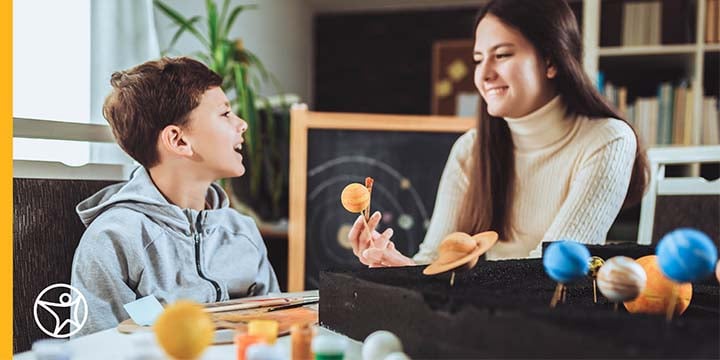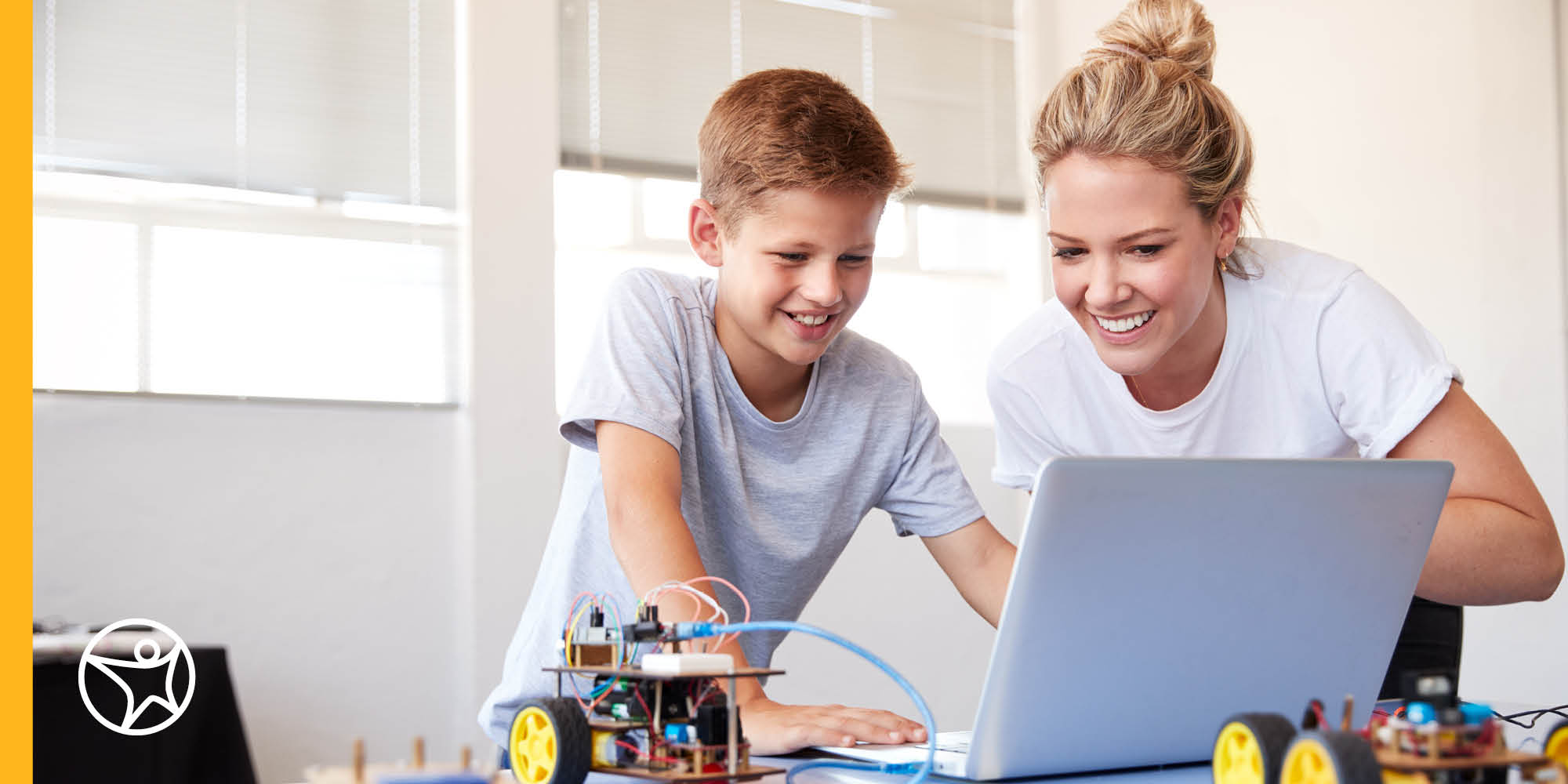11 Science Experiments Kids Can Do at Home
by Valerie Kirk
5 min to read
Take a look around—there is science at work everywhere! From the grass and trees growing in our yards to the bananas turning brown on our countertops, we witness science in action every day, often without even realizing it.
If your elementary school student is curious about science or you are looking to supplement your online school or homeschool student’s science curriculum, here are 11 fun science experiments for kids that can easily be done at home with materials you probably already have on hand.
As an added bonus, these science experiments follow the scientific method, making them great science fair projects!
The Scientific Method
It’s important for elementary school students to learn about the scientific method, which teaches them to look at scientific evidence before making statements of fact. Learning the scientific method in elementary school will help prepare them for the more rigorous middle and high school science classes or for a future STEM-based career.
Here are the six steps of the scientific method:
1. Ask a Question
The scientific method begins when students ask questions about things they can observe about their science experiment topic. To help them develop the questions independently, have them think about the five “w” questions they may be learning in their elementary school language arts class—who, what, when, where, and why. Just like in language arts class, it’s important to also ask how!
2. Do Background Research
In scientific method step 2, students are encouraged to research information about their topic using the internet and other resources.
3. Construct a Hypothesis
After researching the topic, the student can make a hypothesis, or educated guess, about what will happen in the science experiment. The hypothesis is usually stated in the following format, which allows the results to be measured:
“If I _____ (do this), then _____ (this) will happen.”
4. Test Your Hypothesis with an Experiment
In this step, your science experiment will test whether the student’s hypothesis is true or false. All science experiments have variables, but to make it a true scientific test to support the hypothesis, only one variable can change while keeping everything else the same.
5. Analyze Your Data and Draw a Conclusion
Once the science experiment is completed, students should analyze the information and decide whether their hypothesis was proven true or false.
6. Communicate Your Results
Like true scientists, students should share the results of their science experiments! If they did this science experiment for a science fair project, they could make a display showcasing their findings.
11 Fun Science Experiments for Kids
1. Do Seeds Need Light?
In this science experiment, students learn about how light affects the ability for seeds to grow. Seeds are placed in small cups and then are exposed to either sunlight, lamplight, or are covered in a box with no light.
2. What Makes Ice Melt?
This is a classic science fair project that teaches students about what can melt ice faster. If you live in a northern climate where your roads are salted in the winter, this science experiment will help your student understand why!
3. What Activities Gets My Heart Rate Up?
This is a great science experiment to demonstrate the importance of exercising for your heart health. Students make a list of both stationary and physical activities, like jumping rope, shooting a basketball, and playing video games. They then do each activity for a set period of time and record their heartbeat after each session to see which activity is better for their heart.
4. What Shape Boat Holds the Most Weight?
Ever wonder how ships made of steel can float? In this science experiment, your student will craft different shaped boats out of aluminum foil—then add a small amount of weight to each to see which shape is the best ship design!
5. Are Red Apples Sweeter than Green Apples?
This is a great science project for kids because they get to snack on apples throughout the experiment! Here, students will explore which color apples are sweeter using pH strips found at your local hardware store.
6. Is it Easier to Memorize Words with Fewer Syllables?
This science fair project gets the entire family involved! Volunteers are given a list of words with different syllables to memorize in a set period of time to explore which words are easier to memorize.
7. Does Vinegar Kill Germs?
Vinegar has been used throughout the years as a household cleaner. This science experiment for kids helps them understand if vinegar really does kill germs.
8. Which Containers Preserve Food Best?
This science experiment will also show students how to help their families save money on groceries! In the experiment, students put fruit into different kinds of containers to see which one preserves them the best.
9. Are Fingerprints Hereditary?
Here is another fun science project that gets the entire family involved! Students learn about the different types of fingerprints and examine fingerprints from family and non-family members to see if fingerprint types are hereditary.
10. Which Liquids Are Heavier?
Elementary school students will love this science experiment where they make a rainbow out of liquids to determine which ones have more density.
11. Does the Height of a Ramp Affect the Speed and Distance a Toy Car Travels?
This is a really fun science experiment for kids who love Matchbox cars! Using a wood or cardboard ramp, students will use things like books to change the gradient. They can then test how fast and how far their cars will go on the different gradients.
More At-Home Science Projects
If you are looking for more science activities to extend your elementary school student’s learning, check out the Connections Academy Resource Hub, which is full of STEM activities, including making your own fossils and building a Rube Goldberg machine.
Did you know that these at-home science experiments are similar to lessons your student would complete in online school? If you enjoyed spending time with your student working on these science projects and supporting their learning, maybe online school is right for you! Join a Connections Academy information session to learn more. It’s never too late to make the switch to a new school experience.



